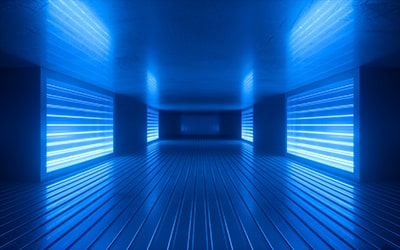
Blog > Energy > HVAC Options for COVID-19 Safety
HVAC Options for COVID-19 Safety
6/9/20 | Gregory Carr, Rexel Technical Consultants

Blog > Energy > HVAC Options for COVID-19 Safety
6/9/20 | Gregory Carr, Rexel Technical Consultants
The COVID-19 pandemic has required us to change a great many things in our lives and professions. As part of this, a change in your HVAC system may be helpful or required. I always recommend considering the energy factor in making these choices. In this post, we'll be looking at energy-efficient HVAC options for COVID-19 safety.
For this post, we'll use a hypothetical scenario for illustrative purposes. For our example, we are considering a basic open facility of 8,000 square feet with a 25-foot ceiling and a total air-handling unit (AHU) airflow of 9,500 and outside air (OA) setting of 2,800. We estimate the approximate annual cost for heating and cooling to be about $19,000 per year.
The standard design for an air handler typically considers comfort requirements and fresh air requirements based on breathing-produced CO2. In commercial/industrial applications, there may be an off-gassing or process requirement as well. As we move forward, we may need to consider the entrance of a highly contagious and life-threatening virus. For schools, public auditoriums, offices, and other gathering spaces, we will likely need to consider some options for the protection against virus propagation.
Considering that we are working to protect against infectious disease, the natural inclination is to look to the HVAC protocols used in medical facilities. Medical facilities typically use one of three (or sometimes all or combination) methods for protection: increased outdoor airflow, UV light disinfection in the airstream, and HEPA filtration.
The first of the HVAC options for COVID-19 safety requires the smallest initial investment and could be the quickest to implement. To find data on increased outdoor air, we would look to ASHRAE Standard 170 Ventilation for Medical Facilities. This standard indicates outdoor air handling in terms of air changes per hour (ACH). Depending on the criticality of the facility or area, ACH rates range between two and four. Standard ACH rates for our current facilities, in contrast, would be about 0.75 (typical).
One way we could look to protect our facility is to boost the outdoor air rate, taking on the caution of a medical facility. This implementation would take minimal effort by adjusting the settings on our building automation system. For details on this implementation, we recommend you consult your automation contractor. In implementing this effort in our example, we consider the air handler's heating and cooling capacity. In addition to any minor cost from an automation contractor, we consider the increased cost of heating and cooling the additional outdoor air. For our model air handler, we would expect moving from an ACH of 0.75 to two to result in an annual increase of approximately $5,000. To push the ACH up to four, we would expect an annual increase of approximately $13,500.

The third of our HVAC options for COVID-19 safety is a sort of belt and suspenders approach offered by AHU manufacturers. This approach adds both the UV disinfection as well as a bank of filtration. High-efficiency particulate air (HEPA) filters are highly dense filters that are likely to capture a significant portion of the contaminants. The balance of contaminants is then more easily eradicated by the UV system down-stream. We estimate an installed cost of this option of approximately $25,000
As with most measures, we obviously must consider these HVAC options for COVID-19 safety in terms of cost (implementation and operating). With COVID-19, I feel there are two more significant considerations: effectiveness and operating period.
As I am not a medical or germ specialist, I would not gauge the qualification of these measures. This really needs to be a discussion with a public health professional. However, I would expect that they would be additive, increasing effectiveness (e.g., increased outdoor air and UV disinfection and HEPA filtration are greater than any one effort alone).
This consideration involves how long you believe you will need these measures in place. The UV and HEPA options are capital expenditures and not insignificant in price. But when compared to the increased outdoor air option, they have minor operating costs. The increased outdoor air option is also a measure we can turn on and off.
For instance, if we are a school hoping there will be improved treatments and a vaccine in the fall, it may make sense to consider the outdoor air increase. We can wait until the fall to implement, and then, when we have good confidence that the virus has been eradicated, we can cut back the outdoor air or go back to normal operations. Or if we are not confident other airborne problems may persist, we might decide to put in a longer-term (capital project) measure as the amortized cost may beat the operating cost of the increased outdoor air option. We simply need to choose our measure (filter, UV, or both) and divide by the number of months or years we feel it will be necessary. And then compare that to the operating cost of the increased outdoor air option.
This is just one example with many variables, and we've provided it only to give you some ideas of how to be energy conscious when dealing with a pandemic. These HVAC options for COVID-19 options can be challenging to consider, so please feel free to contact us for help finding the most effective (cost and health-wise) solution!
Be Well!